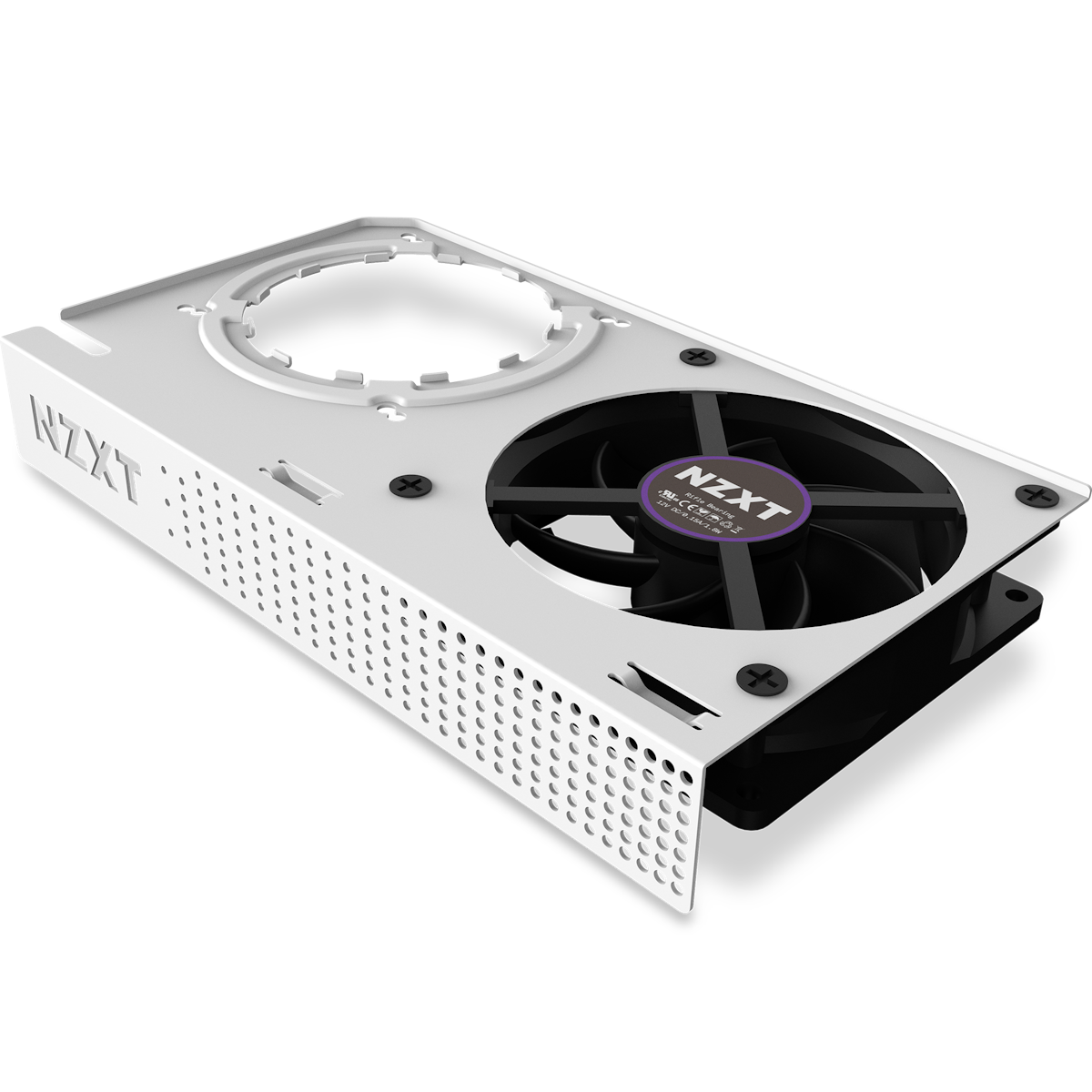I'm into the idea of cases that make it easier to duct because I honestly don't want mesh cases. I don't want to see my pc internals, I don't want to see rgb. If anything I want sound dampening, but the problem with closed cases is the fans have to spin faster so they're louder. Having ducting to keep the rpms down would be great. I don't particularly care about lowering the temp from 70C to 60C or something like that. Just keep the temp the same and lower fans.
Install the app
How to install the app on iOS
Follow along with the video below to see how to install our site as a web app on your home screen.
Note: This feature may not be available in some browsers.
You are using an out of date browser. It may not display this or other websites correctly.
You should upgrade or use an alternative browser.
You should upgrade or use an alternative browser.
PC cooling
- Thread starter Scott_Arm
- Start date
I was running the Asetek Vapochill PE back then ...I recall ducting and baffling being pretty common in DIY cooling in the early/mid-2000s. Pretty sure I had cardboard intake and exhaust baffling for my thunderbird at one point, and later for two radiators that were side by side. It's really too build-specific (case, mobo, heatsinks, etc) to be productized other than those side-panel ducts that pointed straight at the CPU, and that went away when cooler design shifted from top-down heatsinks to towers, along with the move from 60mm and 80mm fans to 92mm and 120mm.
Thermalright had an accordion-style exhaust duct that you could strap between the back of the heatsink and case exhaust, but I don't think it was really all that necessary as a tower cooler is practically right next to the case exhaust already. I'm also not sure how broadly beneficial they truly are. A server or laptop is one thing, as you've got limited space and positions for intake and exhaust, and limited overall volume, so your only option are small, noisy high pressure fans with ducts to make sure everything gets a predictable amount of air. A desktop PC has tons of area, flexibility, and volume so you get to use large diameter, quiet, low RPM fans.
In a world where PC cooling is mostly about AIOs, water kits, and cases with pre-made mounting points for radiators, the whole DIY hotrod culture feels like a thing of the past. People aren't cutting and assembling their own side windows, they're not buying heater cores and aquarium pumps, or using PVC pipes for bong coolers. Reminds me that I should post a picture of my Geforce DDR. Probably the least photogenic water cooling job ever, but it was fully custom.
That was pretty crazy. I lost count on how many Athlon XP 'Palomino' and 'Thoroughbred' cores I cracked during installation and extreme overclocking
davis.anthony
Veteran
I'm into the idea of cases that make it easier to duct because I honestly don't want mesh cases. I don't want to see my pc internals, I don't want to see rgb. If anything I want sound dampening, but the problem with closed cases is the fans have to spin faster so they're louder. Having ducting to keep the rpms down would be great. I don't particularly care about lowering the temp from 70C to 60C or something like that. Just keep the temp the same and lower fans.
So you go full water cooling.
I used to have a big NZXT case with no side windows and thick sound dampening.
Two separate loops (One for CPU and one for GPU) with both having thick 360mm radiators.
Slow fans and if wasn't for the HDD activity light blinking you wouldn't have even known the PC was on.
davis.anthony
Veteran
I was running the Asetek Vapochill PE back then ...
That was pretty crazy. I lost count on how many Athlon XP 'Palomino' and 'Thoroughbred' cores I cracked during installation and extreme overclocking
I had a custom Prommie Mach 2 GT that was rated at 350w.
Handled a 2500k at 5.5Ghz @ -55c loaded.
Sadly the CPU's released in later generations either overwhelmed the phase unit or they didn't scale enough with the cold to justify the 300w power consumed by the phase unit.
That CPU is 10 years younger than the Athlon XPI had a custom Prommie Mach 2 GT that was rated at 350w.
Handled a 2500k at 5.5Ghz @ -55c loaded.
Sadly the CPU's released in later generations either overwhelmed the phase unit or they didn't scale enough with the cold to justify the 300w power consumed by the phase unit.
Yeah the phase change cooling wasn't cheap and you had to wait several minutes to be able to boot while it cooled down to a predetermined temperature. The power consumption wasn't really a problem back then though, although that is more than my entire computer these days.
So you go full water cooling.
I used to have a big NZXT case with no side windows and thick sound dampening.
Two separate loops (One for CPU and one for GPU) with both having thick 360mm radiators.
Slow fans and if wasn't for the HDD activity light blinking you wouldn't have even known the PC was on.
Yah, it's just expensive. Off the shelf aios for cpu aren't too bad, but gpu solutions are just expensive. And then custom is a whole lot of work and money.
davis.anthony
Veteran
AIO mod the GPUYah, it's just expensive. Off the shelf aios for cpu aren't too bad, but gpu solutions are just expensive. And then custom is a whole lot of work and money.
AIO mod the GPU
Any time I've seen those they're pretty expensive, but maybe I'm wrong. You're usually better off buying an aio model when they come out, I think.
davis.anthony
Veteran
Normally just the price if whatever AIO you want to use and a £25 bracket.Any time I've seen those they're pretty expensive, but maybe I'm wrong. You're usually better off buying an aio model when they come out, I think.
I'm sure NZXT still do one.
Normally just the price if whatever AIO you want to use and a £25 bracket.
I'm sure NZXT still do one.
I’m super confused about how this works. Normally you have a plate that circulates the coolant over the gpu die, the memory and vrms
davis.anthony
Veteran
I’m super confused about how this works. Normally you have a plate that circulates the coolant over the gpu die, the memory and vrms
You buy a AIO made for a CPU and a bracket that converts the mounting so it works on a CPU.
I haven't looked at them for years but this is the NZXT bracket.
Attachments
That makes no sense, if the aio is made for a cpu why does it have to be converted so it works on a cpu ?You buy a AIO made for a CPU and a bracket that converts the mounting so it works on a CPU.
arandomguy
Veteran
That makes no sense, if the aio is made for a cpu why does it have to be converted so it works on a cpu ?
He means converted to work on a GPU. The product in his attachment is a kit released by NZKT to adapt a CPU AIO for GPUs.

Kraken G12 | GPU Cooler Mounting Bracket
This installation bracket allows NZXT Kraken AIOs to be directly mounted to a GPU without the maintenance of a custom loop.
He means converted to work on a GPU. The product in his attachment is a kit released by NZKT to adapt a CPU AIO for GPUs.

Kraken G12 | GPU Cooler Mounting Bracket
This installation bracket allows NZXT Kraken AIOs to be directly mounted to a GPU without the maintenance of a custom loop.nzxt.com
I looked at that thing. I'd be worried about vram and other vrms getting too hot. Most recent nvidia gpu it supports is rtx 2080.
Similar threads
- Replies
- 14
- Views
- 4K
- Replies
- 10
- Views
- 2K
- Replies
- 31
- Views
- 14K
- Replies
- 5
- Views
- 2K

